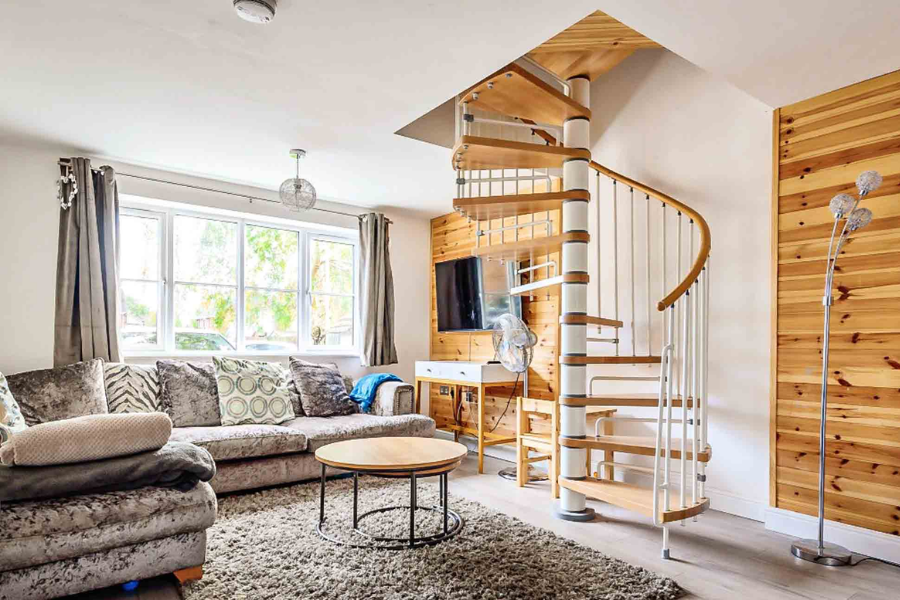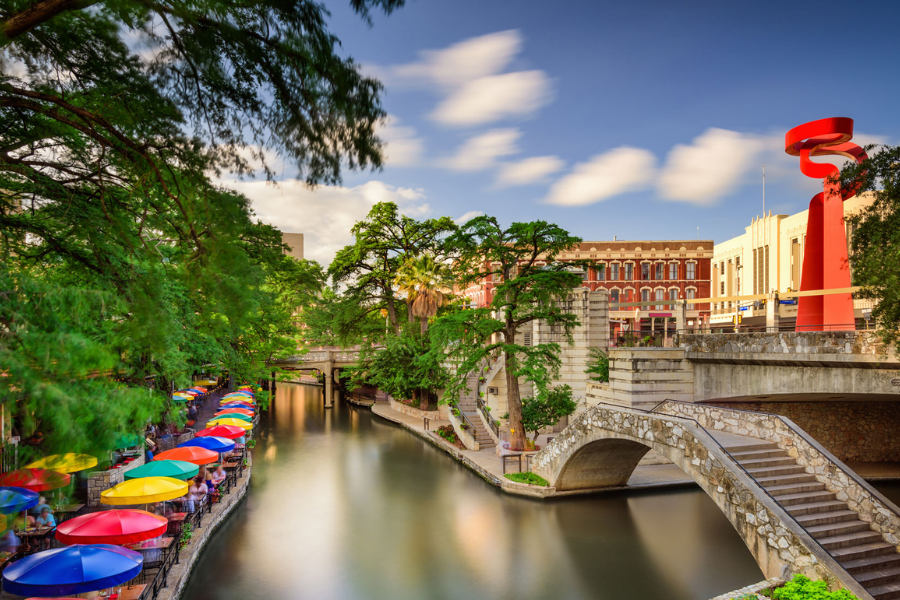Introduction to Spiral Staircases
Spiral staircases have long been celebrated for their elegance, functionality, and ability to maximize space. These architectural marvels are a blend of beauty and practicality, often becoming the centerpiece of a home or structure. Whether used in modern homes, historical landmarks, or outdoor spaces, spiral staircases offer a unique solution to vertical movement while adding a distinct aesthetic appeal.
This guide explores the history, design, benefits, types, and practical considerations for incorporating spiral staircases into your space. By the end, you’ll have a clear understanding of why they continue to captivate architects, designers, and homeowners alike.
The History of Spiral Staircases
Spiral staircases date back centuries, with their origins tracing to ancient civilizations. Early examples can be found in Mesopotamian ziggurats, Roman amphitheaters, and medieval castles. These structures were initially designed for functionality, allowing access to towers and upper levels while saving space. The helical design provided structural strength, making them a preferred choice for towers and defensive structures.
During the Renaissance period, spiral staircases evolved into symbols of luxury and artistic expression. Intricate designs, ornate railings, and fine craftsmanship became common, showcasing the wealth and status of the property owner. Today, while their functional benefits remain, modern technology and materials have allowed for endless design possibilities.
Benefits of Spiral Staircases
Spiral staircases are not just visually appealing but offer a range of practical benefits. Here are some of the key advantages:
1. Space Efficiency
One of the primary reasons spiral staircases are popular is their compact design. Unlike traditional straight staircases, which require a larger footprint, spiral staircases take up minimal space, making them ideal for small homes, apartments, and tight corners.
2. Aesthetic Appeal
A spiral staircase can transform any room into a stunning focal point. With their elegant curves and customizable designs, they add a sense of sophistication and style that enhances the overall décor of a space.
3. Versatility
Spiral staircases can be designed to fit various architectural styles, from rustic and industrial to sleek and contemporary. Materials like wood, metal, glass, and even concrete offer endless customization options.
4. Cost-Effectiveness
In many cases, spiral staircases can be more affordable than traditional staircases. They require fewer materials and less space, reducing construction and installation costs.
5. Safety and Stability
While often considered decorative, spiral staircases can be built with safety in mind. Non-slip steps, sturdy railings, and proper spacing between treads ensure safe use without compromising on design.
Types of Spiral Staircases
Spiral staircases come in various styles, each suited to different tastes and purposes. Here are the most common types:
1. Classic Spiral Staircases
These traditional designs feature a central column around which the steps spiral. They’re timeless and practical, making them a popular choice for homes and offices.
2. Helical Staircases
Unlike classic spiral staircases, helical designs don’t rely on a central column. Instead, they create a smooth, flowing curve, giving a more open and luxurious feel. Helical staircases are often found in grand architectural spaces.
3. Floating Spiral Staircases
Floating designs use hidden support structures to give the illusion of steps suspended in mid-air. These are perfect for contemporary spaces and add an element of modern artistry to the room.
4. Outdoor Spiral Staircases
Typically made of durable materials like galvanized steel or aluminum, outdoor spiral staircases are designed to withstand weather conditions. They’re commonly used for accessing decks, terraces, or lofts.
5. Customized Spiral Staircases
Custom designs allow homeowners to incorporate unique elements, such as intricate railings, LED lighting, or personalized materials. These staircases are tailored to suit specific needs and preferences.
Materials Used in Spiral Staircases
The choice of materials significantly impacts the look, feel, and durability of a spiral staircase. Here’s a breakdown of popular options:
1. Wood
Wooden spiral staircases exude warmth and charm, making them ideal for traditional or rustic interiors. Hardwood varieties like oak, mahogany, and walnut are commonly used for their durability and aesthetic appeal.
2. Metal
Metal staircases, often made of steel or wrought iron, are perfect for industrial and modern designs. They offer strength and longevity, with the ability to support intricate detailing.
3. Glass
Glass staircases are a bold choice for contemporary spaces. Often combined with steel frames, they create a sleek, minimalist look while allowing light to flow freely through the space.
4. Concrete
Concrete spiral staircases are robust and durable, often used in industrial settings or outdoor spaces. They can be left exposed for a raw aesthetic or covered with decorative finishes for a polished look.
5. Combination Materials
Many modern spiral staircases use a mix of materials to achieve a unique design. For example, combining wood treads with glass railings or metal frames with LED lighting can create a striking visual effect.
Practical Considerations for Installation
Before installing a spiral staircase, there are several factors to consider to ensure it meets your functional and aesthetic requirements:
1. Space Availability
Measure the available space carefully. Spiral staircases are compact, but they still require sufficient room for safe usage. Ensure there’s enough clearance for headroom and comfortable movement.
2. Building Codes and Regulations
Check local building codes to ensure compliance with safety standards. These regulations often dictate the minimum width of steps, height of railings, and spacing between treads.
3. Usage Frequency
Consider how often the staircase will be used. For daily use, opt for designs with wider steps and ergonomic features. For occasional access, such as to an attic or loft, more compact designs may suffice.
4. Customization Options
Work with a designer or manufacturer to explore customization options. Tailor the staircase to match your interior design, incorporating elements like color, material, and finishing details.
5. Professional Installation
While some spiral staircases come in DIY kits, professional installation ensures safety and durability. Experienced installers can address structural considerations and guarantee a flawless finish.
Maintenance and Care
Proper maintenance is essential to preserve the beauty and functionality of a spiral staircase. Here are some tips:
1. Regular Cleaning
Dust and debris can accumulate on treads and railings. Regular cleaning with appropriate tools and cleaners helps maintain the staircase’s appearance and prevents wear.
2. Inspect for Wear and Tear
Check for signs of damage, such as loose steps, wobbly railings, or rust (in the case of metal staircases). Addressing issues promptly ensures safety and longevity.
3. Apply Protective Coatings
For outdoor staircases, use weather-resistant coatings to prevent rust or damage from moisture and UV exposure. Indoor staircases can benefit from wood sealants or metal polish.
4. Tighten Fittings
Over time, screws and fittings may loosen due to regular use. Periodically tightening these components keeps the staircase stable and secure.
Spiral Staircases in Interior Design
Spiral staircases are not just functional but also play a significant role in interior design. Here are some ways they enhance spaces:
1. Creating a Focal Point
A well-designed spiral staircase draws the eye and becomes a centerpiece in any room. Choosing bold colors, unique materials, or intricate detailing can enhance its visual impact.
2. Maximizing Vertical Space
In lofts and open-plan designs, spiral staircases provide access to upper levels without obstructing the flow of the room. Their compact design preserves valuable floor space.
3. Enhancing Light Flow
Spiral staircases with open designs, such as glass or metal, allow light to pass through, creating an airy and spacious feel. This is particularly useful in smaller rooms or spaces with limited natural light.
4. Adding Personality
From modern minimalism to vintage charm, spiral staircases can reflect the personality of a space. Customization options allow homeowners to align the staircase with their overall design vision.
Conclusion
Spiral staircases are a testament to the harmonious blend of form and function. Their timeless appeal, coupled with their practical benefits, makes them a versatile choice for a variety of settings. Whether you’re looking to save space, add a touch of elegance, or create a unique design statement, a spiral staircase is a worthy investment.
By understanding the history, benefits, types, materials, and maintenance of spiral staircases, you can make an informed decision when incorporating one into your home or project. With proper planning and thoughtful design, a spiral staircase can elevate not just the vertical movement within a space but also its overall aesthetic charm.













Leave a Reply